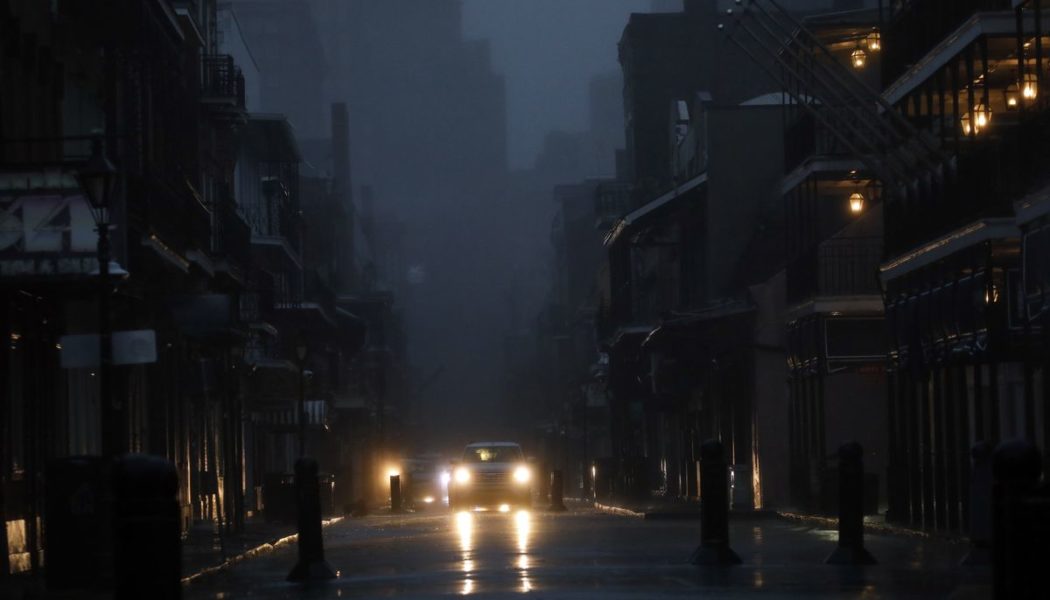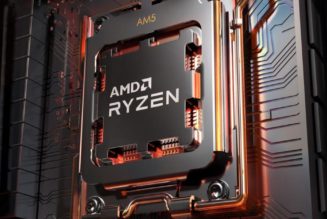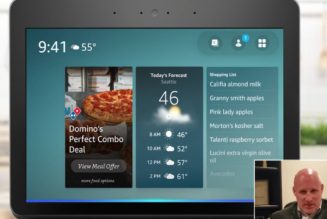Hurricane Ida thoroughly wrecked New Orleans’ power supply, preying on vulnerabilities that are only likely to get worse in the future as storms like Ida become more fierce. The storm knocked out all eight transmission lines that bring power into New Orleans, plunging the city into darkness. The damage was so intense that a new gas-fired power plant — sold as something that could keep the lights on after big storms — took days to bring power to the nearest neighborhood.
To keep the lights on in the future, leaders need to abandon old strategies and build up different kinds of energy infrastructure, experts say. The fallout from Ida is yet another reminder of how fragile the country’s existing energy infrastructure is, especially as climate change brings on more extreme weather.
“We’ve been saying, you know, we can’t depend on the traditional system,” says Logan Atkinson Burke, executive director of the local consumer advocacy group Alliance for Affordable Energy. “We need to be planning for the kind of climate impacts that we know are coming, and here they are. Having not planned for them, we’re experiencing the kinds of problems we expected.”
Even before the storm, it was clear that power lines were vulnerable, Burke and other energy experts have said for years. And rather than build another big power plant — in a flood-prone area, no less — the city could have distributed more resilient sources of renewable energy across the city.
Instead, electric and gas utility Entergy has been fined for delaying maintenance to the area’s energy system, The Washington Post reports, which can make the grid even more vulnerable when storms strike. In a move that baffled many residents, Entergy built a controversial new $210 million gas-fired power plant in New Orleans that come online last year. The utility said the plant would help keep the lights on in the event of a major storm like Ida.
“Virtually no one” had electricity in Southeast Louisiana after the storm passed, Gov. John Bel Edwards said on August 30th, and residents could suffer through weeks of power outages. Three days after the storm, made landfall, that plant restored power for “some customers” living nearby, but there’s still too much damage to the grid to easily move power around the city.
As the blackout continues, residents will endure dangerously oppressive heat without air conditioning. They’ll have trouble charging phones and laptops that allow them to communicate with emergency services or loved ones. With water treatment centers lacking power, many don’t have running water or are under boil water advisories. Officials are concerned about carbon monoxide poisoning as people turn to portable backup generators.
:no_upscale()/cdn.vox-cdn.com/uploads/chorus_asset/file/22819814/1234959508.jpg)
There’s a lot the state could do to make its grid more resilient and prevent blackouts like this one. Adding more renewable energy is one way to make the grid more sustainable and less likely to fail completely in a catastrophe. And in the case of Ida, upgrading transmission lines that serve as main arteries bringing energy into the city, as well as smaller distribution lines that deliver energy within the city, would have made the grid sturdier — an argument that Burke’s alliance made as it pushed back against plans to build the new gas plant.
Across the country, there’s been a push to bury transmission and distribution lines to keep them safer from the elements. Embattled California utility PG&E was pushed to bury thousands of miles of power lines after above-ground lines sparked horrific fires. The same could be done in Louisiana to safeguard them from severe storms.
“Instead, all the money that Entergy has been spending is on their gas infrastructure,” Burke says. Entergy opened up another new gas plant in St. Charles Parish in 2019. On paper, building a new gas plant might make financial sense for companies. Utility regulation in the US tends to incentivize new capital investments (in things like, say, a new gas plant) over upgrading existing power lines, says Akshaya Jha, an assistant professor of economics and public policy at Carnegie Mellon University. That’s hindered improvements to transmission and distribution lines across the nation.
“Basically we did not need the plant. And why are you paying for something that we don’t need? It’s just crazy,” Dawn Hebert, president of the East New Orleans Neighborhood Advisory Commission, said in an interview with The Verge prior to the storm hitting Louisiana.
Residents like Hebert from majority-Black and Vietnamese neighborhoods nearby were concerned about higher utility bills and air pollution because of the plant. Consumer and environmental advocates challenged the New Orleans Power Station in court for years. Ultimately, the Louisiana Supreme Court upheld the city council’s decision to approve the plant, and it came online last year. It’s what’s called a “peaker” plant, which only fires up when energy demand “peaks” — or when there’s a major disruption to supply like a hurricane.
“It is important that New Orleans has a source of local generation to aid in storm restoration and prevent extended outages following weather events that could take down transmission lines needed to import power,” Former president and CEO of Entergy Charles Rice wrote in an opinion defending the need for the new plant on Nola.com in 2017.
With Ida, the city’s transmission and distribution lines sustained so much damage, it’s still not clear when Entergy will be able to get power from the plant to more residents. In an update posted on Entergy’s website, the utility said that it is working to repair power lines and substations. Entergy did not immediately respond to a request from The Verge. A spokesperson for the utility told The Washington Post that it had spent $4.2 billion on its transmission lines between 2014 and 2019, although it’s unclear where in Entergy’s large service area (which spans several states) that money was spent.
In the short term, repairing downed lines is a priority for turning the lights back on for residents. With those lines back up, the gas-fired peaker plant can provide some much-needed juice. While it won’t be enough to supply the entire city, it can get power to critical infrastructure like hospitals. But even that is dependent on the plant having enough fuel — natural gas — to fire itself up. That doesn’t yet seem to be an issue in Ida’s wake, but that was a major problem earlier this year when a cold snap left millions of Texans without power.
Long-term solutions will require more imagination, experts say. “Looking to the past to give us an idea about the future is not as not as good as used to be,” says Joshua Rhodes, a research associate at the University of Texas at Austin. “We should be taking increased risk from a changing climate into consideration whenever we are replacing this infrastructure or rebuilding this infrastructure.”
Climate change is supercharging extreme weather events, a definitive new report from the United Nations recently said. Tropical storms are growing more fierce and unpredictable, and that will test anything Louisiana rebuilds. Meanwhile, aging energy systems in the US were built on fossil fuels that exacerbate the climate crisis by producing more heat-trapping greenhouse gases. To get the climate crisis under control, no new gas infrastructure should be built, says another United Nations report published in May.
There are alternatives to fossil fuel plants that could keep the lights on in an emergency. The way most grids currently operate, huge areas might be reliant on a single plant. So if a disaster strikes that plant or the lines that connect it to homes, the effects are far-reaching. One way to fix that problem, while also reducing greenhouse gas emissions, is to rewire the grid so that renewable sources of energy are dotted throughout communities.
New Orleans offers a perfect example of how this might work. The city already has a lot of residential solar. If those solar panels were paired with batteries, residents could store energy for emergencies. Batteries are still expensive, so it’s something that utilities, regulators, and city planners would need to incentivize.
“Let’s think about investing our money in ways that the dollar goes farther,” Burke says. “Let’s solve the problem at the root where people live,” she says, because as it is now, “people are being asked to shelter in their homes in hot, humid weather, and with no answer yet as to when there will be electricity.”








